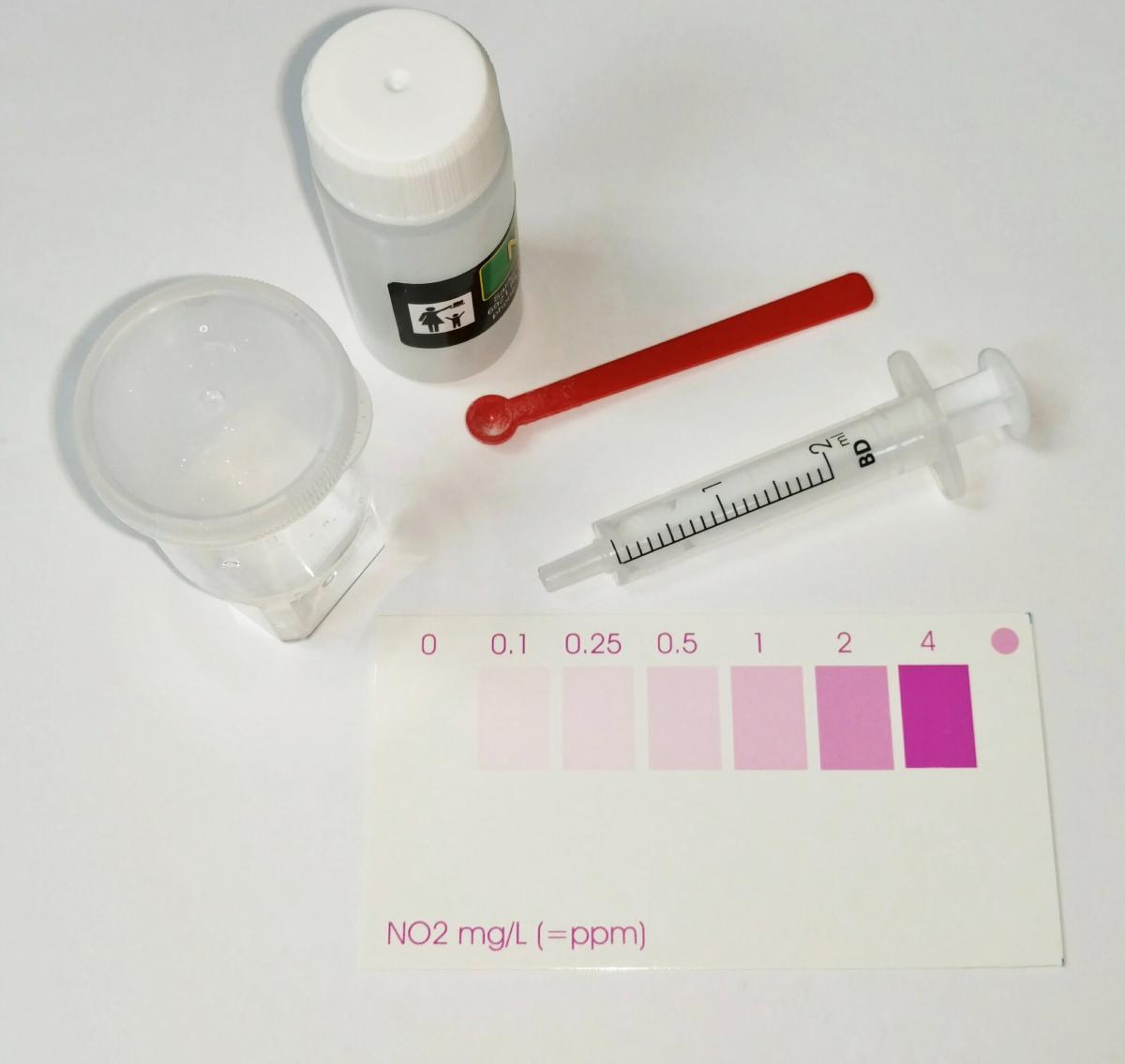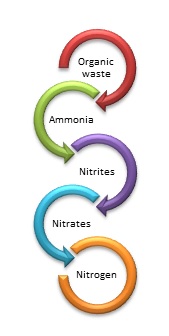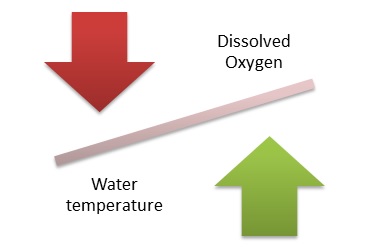The Importance of Water Quality Testing in Aquatic Animal Health
 Proper water quality is essential for maintaining healthy aquatic animals. This is true of fish, coral, invertebrates, turtles and amphibians. In most cases these animals live in the same water where they eat, drink and eliminate waste. Animals in captivity have the added challenge of living in a far smaller volume of water than their counterparts in the wild. It’s very important that their caretakers understand how to test the water and respond to any abnormal parameters. This article explains why it’s important to test several different water quality values and how they affect each other. The reader shouldn’t need to relearn past chemistry class notes to get an adequate understanding.
Proper water quality is essential for maintaining healthy aquatic animals. This is true of fish, coral, invertebrates, turtles and amphibians. In most cases these animals live in the same water where they eat, drink and eliminate waste. Animals in captivity have the added challenge of living in a far smaller volume of water than their counterparts in the wild. It’s very important that their caretakers understand how to test the water and respond to any abnormal parameters. This article explains why it’s important to test several different water quality values and how they affect each other. The reader shouldn’t need to relearn past chemistry class notes to get an adequate understanding.
All systems should regularly be tested for pH, temperature, ammonia, nitrites, nitrates and alkalinity. Additional tests may be important depending on different species being held or special circumstances.
Testing Methods:
A wide range of water testing kits are available ranging from a few dollars to thousands of dollars in cost. In general, you get what you pay for with water quality testing kits. At the less expensive end of the spectrum are “dip strip” type kits. A plastic strip is dipped into the water and pads on the strip change color to indicate levels. Few of these are adequate even for a casual hobbyist. The next step up is what is called colorimetric kits. Drops of chemicals are added to a small volume of water in a test tube and a color change is used to determine test results. For the average hobbyist these are usually adequate and can be obtained for about $30 in a kit that will give 50-100 tests. The important factor with these kits is watching the expiration date on the chemicals. These kits are available from American Pharmaceuticals, Red Sea, Sea Chem, Instant Ocean and other manufacturers.
For the professional level aquarist it’s far more appropriate to get more expensive and accurate kits. The increased size and stocking density require more accurate information for close monitoring. There are some colorimetric kits that have greater accuracy. Manufacturers like Hach and LaMotte offer kits with improved accuracy at a reasonable price. The same companies offer digital monitoring devices that should be utilized for some species that require special care or filtration.
The Big Three: The Nitrogen Cycle:
 The foundation of water quality is what is called the nitrogen cycle. This is monitored by testing ammonia, nitrites and nitrates. Waste produced by aquatic animals is not put nicely in the yard to await scooping; it is deposited into the water in which they feed and swim. The nitrogen cycle is a natural mechanism for removing this waste. Organic material (feces, uneaten food, dead fish, etc) decomposes to form ammonia. In the water, bacteria convert the ammonia to nitrites, then other bacteria converts the nitrites into nitrates. The nitrates are removed from the water by plants, water changes or they are broken down by other bacteria into nitrogen which is then released into the air as a gas. All three of the compounds can be harmful to living animals, so having the bacteria of the nitrogen cycle well established in an aquarium is important for good water quality and aquatic animal health.
The foundation of water quality is what is called the nitrogen cycle. This is monitored by testing ammonia, nitrites and nitrates. Waste produced by aquatic animals is not put nicely in the yard to await scooping; it is deposited into the water in which they feed and swim. The nitrogen cycle is a natural mechanism for removing this waste. Organic material (feces, uneaten food, dead fish, etc) decomposes to form ammonia. In the water, bacteria convert the ammonia to nitrites, then other bacteria converts the nitrites into nitrates. The nitrates are removed from the water by plants, water changes or they are broken down by other bacteria into nitrogen which is then released into the air as a gas. All three of the compounds can be harmful to living animals, so having the bacteria of the nitrogen cycle well established in an aquarium is important for good water quality and aquatic animal health.
If any of these parameters are above the normal range, it means that there is too much waste being produced relative to the level of bacteria in the biologic filter. Steps must be taken to identify and correct the underlying problem. The most common causes are having too many animals in a system, overfeeding or improperly preparing the tank prior to placing animals in the system. Properly preparing a tank for animals requires special steps to cycle the biological filtration over several weeks prior to animals being placed into the tank. Cycling a tank is beyond the scope of this article, but another article on the subject can be found on this website.
There are also some animals that produce more ammonia than others and usually require better filtration. Lionfish, octopi, sharks, rays, reptiles and amphibians are good examples. If biological filtration parameters are elevated on a system with these animals, it may be due to inadequate filtration. Certain medications and chemicals can also kill the bacteria in a biological filter, along with drastic changes in pH or temperature. Corrective actions will be discussed in another article on this website.
Temperature, pH, and Alkalinity
Temperature, pH and alkalinity are important to observe closely because they are important on their own, and because they affect the nitrogen cycle.
The normal values for these parameters will depend on what species of animals are being kept. Knowing the normal values for specific animals is an important part of maintaining good health. Listing normal values for all animals kept as pets are beyond the scope of this article, but it is important to evaluate a number of sources and check the reliability of information. Some general parameters are listed in Table 1.
In addition to knowing the normal values, an understanding the effect on the biological filtration and the animal is valuable in avoiding problems in a system.

Temperature: Temperature is important for most animals kept in aquariums because most are poikilothermic or endothermic, meaning they do not produce their own body heat. All of the biochemical reactions responsible for digesting food, utilizing oxygen, having an effective immune system and other vital body systems depend on certain temperature ranges. Each species has its own specific temperature ranges needed for these processes. Temperatures that are too cold or too high for the animal being kept will at the least cause stress, and at the worst could be fatal.
pH: Almost all water is either acidic or basic. The measure of acid or base is pH. Some animals require a very specific tight maintenance of pH while others are more tolerant of fluctuations. Even animals that are tolerant of a wider range of pH do better with less fluctuation. Depending on the animal, it may be better to maintain a steady pH that is out of the normal range for that species than deal with fluctuations by using chemicals to try to maintain the normal range and having wide fluctuations in the process. Rapid shifts in pH can be harmful or fatal to most animals. With increasing pH, ammonia also changes to a form that is more toxic to the animals in the system.
Alkalinity (KH): Alkalinity is a measure of elements in the water that help to act as a pH buffer. This is one of the most often overlooked parameters outside of professional aquariums, but one of the most important to maintain. The tests measure bicarbonate and carbonate, which act to help keep the pH in balance. If alkalinity is low, the system is in danger of experiencing rapid changes that can lead to the deaths of the animals in the system (see “Old tank syndrome” in the related article). In addition to rapid serious changes, low alkalinity can allow shifts in pH daily that will lead to chronic stress for the animals in the system. Low alkalinity can usually be corrected by adding a source of calcium carbonate, such as crushed oyster shells or coral. If dangerously low, it can be corrected in the short term by adding baking soda (sodium bicarbonate), but this should be done very carefully under the guidance of someone very experienced with water quality maintenance.
Additional Tests:
 Salinity: This is a measure of the salt content in a system. For marine aquariums, this should be considered part of the standard regular testing. When water from a salt water tank evaporates, the salt stays behind. Replacing the evaporated water should account for this. Water changes also need to be done with water of the correct salinity to avoid fluctuations. The range needed again depends on the species of fish or coral in the tank. Measuring salinity can be done with a refractometer or a hydrometer. A refractometer needs to be calibrated with distilled water frequently to ensure accuracy. Failure to frequently calibrate is the most common cause of errors with refractometers. Hydrometers are calibrated to a specific temperature of water, and this often does not match the aquarium water temperature. The calibration can be changed at the time of purchase by an experienced aquarist. Aquariums of different temperatures will require different hydrometers to match the calibration.
Salinity: This is a measure of the salt content in a system. For marine aquariums, this should be considered part of the standard regular testing. When water from a salt water tank evaporates, the salt stays behind. Replacing the evaporated water should account for this. Water changes also need to be done with water of the correct salinity to avoid fluctuations. The range needed again depends on the species of fish or coral in the tank. Measuring salinity can be done with a refractometer or a hydrometer. A refractometer needs to be calibrated with distilled water frequently to ensure accuracy. Failure to frequently calibrate is the most common cause of errors with refractometers. Hydrometers are calibrated to a specific temperature of water, and this often does not match the aquarium water temperature. The calibration can be changed at the time of purchase by an experienced aquarist. Aquariums of different temperatures will require different hydrometers to match the calibration.
Dissolved Oxygen: For systems that have salt water fish, large volumes of water or high pH fresh water fish, monitoring dissolved oxygen can be important. This test measures the amount of oxygen that is in the water available for the fish to breathe. Systems with high salinity, high temperature or high pH are especially vulnerable to problems with lower oxygen levels that could stress the fish in the system. Low dissolved oxygen can be corrected by agitation of the water’s surface or by the addition of air stones to the aquarium or pond.
Phosphate (PO3): Just as with nitrates, phosphates come about as the product of the breakdown or organic matter. They, along with nitrates, will contribute to algal blooms and can stunt the growth of corals in marine systems. Because of these factors it is important to test and keep phospate low in these systems. Phosphates can be lowered by performing water changes. Phosphate reactors are often utilized in coral systems as an additional method of phosphate control.
Total Hardness (GH): Total hardness is a measure of different elements in the water, usually calcium and magnesium. Many species of fish require specific hardness. Research into the animals that will be kept should tell if this is an important parameter to monitor. Low Total hardness can be corrected by the addition of limestone or various calcium salts. High total hardness is trickier to correct. Either water changes must be made using water that has been softened prior to addition to the system or you can use peat moss pellets in the filtration system. However, if using peat moss you must very, very closely monitor your GH and pH, as these can easily swing out of control using this method.
Calcium (Ca), Magnesium (Mg), and other trace elements: Keeping some animals (particularly corals) may require monitoring various trace elements and keeping them in specific ranges for optimal growth. Specifics of these tests are advanced and beyond the scope of this article other than to recommend some research into requirements for coral prior to incorporating them into a reef system. See the related article on the website for more information on coral water quality.
Copper (Cu): If keeping sharks, rays, koi, goldfish, minnows, or other copper sensitive fish, then it may be wise to monitor copper levels. A very sensitive kit is required for copper levels in aquariums or ponds. The kit should be capable of accurate readings between 0.05 and 0.2ppm. Copper should also be monitored closely when there is a concern for metal toxicity or using copper as a therapeutic treatment for parasites. Copper can also come from copper plumbing, especially if you have soft water.
Iron (Fe): Just like for copper, some species of freshwater fish, mainly those of the carp and minnow family like Koi and golfish, are sensitive to this heavy metal.
References for further knowledge:
1. Marine Chemistry: A Complete Guide to Water Chemistry in Marine Aquariums, by C.R. Brightwell.
2. The Reef Aquarium: A Comprehensive Guide to the Identification and Care of Tropical Marine Invertibrates, by Charles Delbeek and Julian Sprung.
3. Aquarium Corals: Selection, Husbandry and Natural History, by Eric H. Borneman.
4. The Cichlid Aquarium, by Paul Loiselle.
5. Discus for the Perfectionist, by Jack Wattley.



